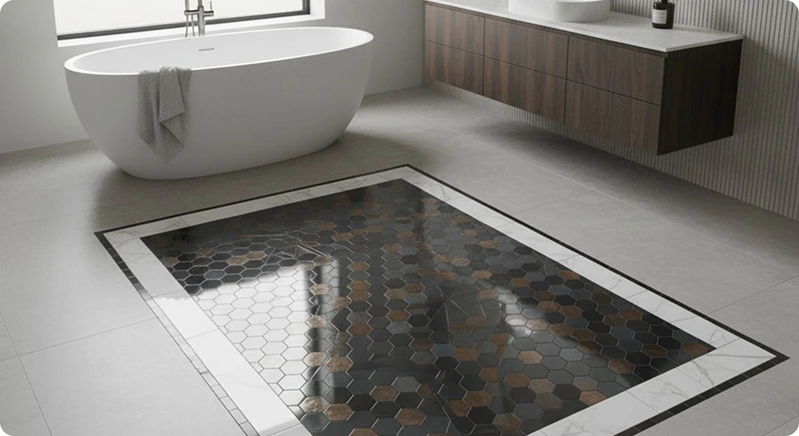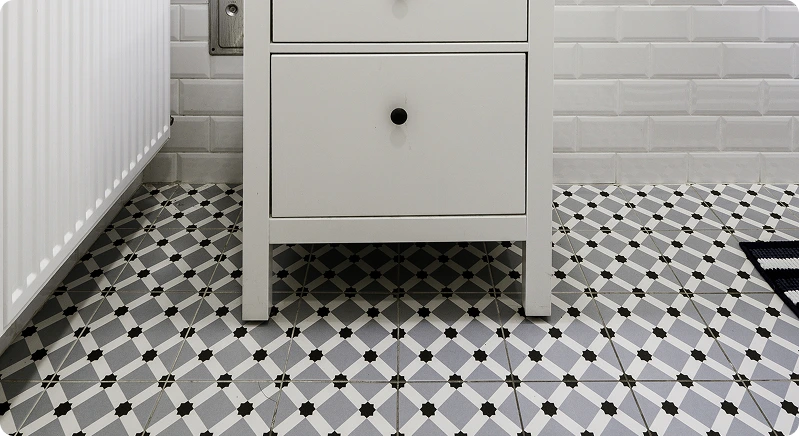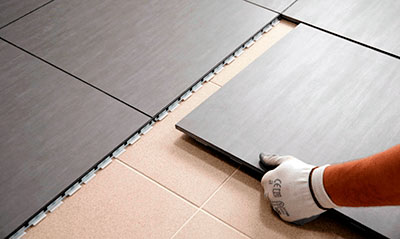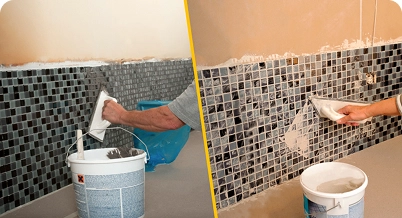How to Correct Bathroom Layout Flaws Using Floor Tile
GF Leads, 25 August, 2025
Even well-designed bathrooms - spacious and naturally lit - can have layout challenges. These issues can be effectively addressed through strategic tile selection and installation patterns.
GFLeads helps tile installation professionals connect with clients across the United States. Our platform brings together skilled craftsmen with homeowners who value quality workmanship and modern design solutions.
1. Crooked Walls: Diagonal Installation
The perfect solution for rooms with non-parallel walls. Diagonal grout lines (particularly with contrasting grout) draw attention to the pattern rather than wall imperfections.
Additional benefit: creates the illusion of more space. Square or rectangular tiles work best for this approach. Important note: diagonal installation may generate up to 20% material waste.
2. Space Enhancement: Herringbone and Checkerboard Patterns
These classic patterns, inspired by hardwood flooring, effectively make rooms appear larger. Elongated wood-look tiles work particularly well, though other elongated formats are suitable.
These versatile patterns work in various interiors, including kitchens. They create movement and expand visual boundaries.
3. Material Shortages: Basic Layouts
Traditional grid-style installation becomes a practical solution when dealing with material calculation errors or needing to combine elements from different collections.
This method offers more variety than it appears. Square tiles can be installed four ways: straight grid, checkerboard, kaleidoscope, or ornamental patterns. Similar options exist for rectangular formats. Plan for approximately 10% extra material.
4. Elongated Rooms: Offset Patterns
The offset brick pattern optimally adjusts proportions in long, narrow spaces. Rectangular tiles are shifted by quarter, third, or half of their length, creating visual rhythm.
Critical consideration: use similarly shaded tiles to avoid creating an uneven surface effect. Any texture works well. Recommended overage: at least 10%.
5. Space Zoning: Area Rug Effect

An effective method for defining functional areas. First determine the "rug's" placement and shape, then create accent elements and borders.
The final step involves filling remaining space with background tile. This approach creates striking visual accents and organizes space effectively.
6. Size Adjustment: Modular Grids
Variable pattern layouts work well in both small and oversized bathrooms. In compact spaces, they create complex visual patterns that distract from limited dimensions.
In large bathrooms, active multi-format "collages" minimize notice of minor subfloor imperfections. Essential requirement: all tiles must come from the same collection to maintain design cohesion.
7. Concealing Utilities: Large-Format Tiles

Bathrooms often require hiding pipes or other utilities. Large-format tiles minimize grout lines and create the illusion of seamless surfaces.
Fewer seams mean less attention to mechanical elements. Additionally, large tiles visually expand spaces. Select shades and textures that harmonize with other bathroom finishes.
8. Geometric Focus: Mixed Formats and Shapes
Combining different tile shapes and sizes creates unique geometric patterns that distract from layout flaws and add dynamism. For example, blend square and rectangular tiles for mosaic effects, or use hexagonal tiles for distinctive accents.
Maintain harmony in color and texture to avoid overwhelming the space.
9. Color Strategies: Visual Illusions
Color powerfully influences spatial perception. Light shades expand spaces, while dark tones create intimacy. Contrasting colors highlight specific areas or minimize wall irregularities.
Gradient color transitions from floor to ceiling create interesting visual effects that can increase perceived ceiling height.
10. Perspective Effects: Patterned Tiles

Patterned tiles can alter spatial perception. Horizontal patterns widen narrow rooms, while vertical designs heighten ceilings. 3D-effect tiles add depth and dimension, enhancing the feeling of space.
Select patterns that complement other design elements without overwhelming the room.
GFLeads provides craftsmen with exclusive tile installation opportunities across the United States. Our partner program includes professional support, material selection assistance, and guaranteed client referrals. Join our network today!
Table of content
- 1. Crooked Walls: Diagonal Installation
- 2. Space Enhancement: Herringbone and Checkerboard Patterns
- 3. Material Shortages: Basic Layouts
- 4. Elongated Rooms: Offset Patterns
- 5. Space Zoning: Area Rug Effect
- 6. Size Adjustment: Modular Grids
- 7. Concealing Utilities: Large-Format Tiles
- 8. Geometric Focus: Mixed Formats and Shapes
- 9. Color Strategies: Visual Illusions
- 10. Perspective Effects: Patterned Tiles


